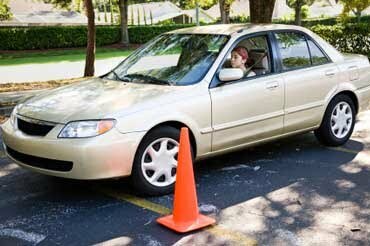As a person grows older, certain adjustments have to be made. For some, the need for those adjustments comes gradually and can go unnoticed. For others, changes are more rapid and obvious. One of the harder parts of growing older is recognizing that things you used to take for granted now require more attention, like driving. It’s often hard for drivers to recognize that their ability to operate a vehicle safely is not what they once were. Some drivers willingly adjust; others need encouragement from friends and family. Still, if there are concerns, either from the driver or from friends and family, there are some things you can do to make sure everyone remains safe on the road.

· Take a safe-driving course. Any licensed driver can benefit from a safe-driving course. Check with the department of motor vehicles to find an approved list of driving courses available. An objective outside observer can provide either the reality check or the reassurance needed to move forward.
· Stay off of the phone. Texting and making phone calls reduces alertness on the road. Even if only for a few seconds, that loss of focus can result in motorists driving the equivalent of an entire football field without having their eyes on the road. As you age and reflexes lessen, that time could be crucial. Elderly drivers should avoid mobile devices while driving. Pullover to make a call if there is an emergency; otherwise, leave the phone out of reach in a backseat.
· Use the headlights. Many cars now feature daytime running lights. For those that don’t, engage the headlights when driving. Using headlights increases visibility and helps other drivers see approaching vehicles, even during the daytime.
· Leave plenty of time. Stress is trying to hurry can lead elderly drivers trying to rush. By leaving extra time, drivers will not feel stressed or rushed.
· Limit distractions behind the wheel. Elderly drivers may become easily distracted by the radio or even other passengers.
· Stick to easy parking. Elderly drivers can opt to park in spaces that have plenty of room or allow for pulling out (rather than backing out). This can improve visibility and reduce the risk of hitting other vehicles.
· Do as much of your driving during daylight hours. For some elderly drivers, driving at night proves difficult because the headlights from passing vehicles can cause issues. Rusty Wallace Toyota General Manager Greg Voncannon says the Toyota engineers are always working to make their cars safer. That’s certainly one big reason he’s proud to represent the Toyota lineup of vehicles. Toyota’s innovative safety features can make all drivers better and help elderly drivers compensate for the march of time.
· Bird’s Eye View Camera with perimeter scan: The 2019 Camry’s Bird’s Eye View Camera uses front, side, and rear-mounted cameras to display a panoramic overhead view. It helps you get in and out of the tightest spots with confidence.
· Intelligent Clearance Sonar with Rear Cross-Traffic Braking: This system warns you when it detects nearby obstacles and, if necessary, under certain conditions, will reduce engine power and apply the brakes.
· Available adaptive-front lighting system: The 2019 Corolla Hatchback’s technology is more than just convenient; it is designed to keep you safe. The available adaptive front lighting system follows your front wheels when you turn for enhanced visibility at night. Driving is an important part of a person’s independence as they age, but protecting themselves and others on the road is extremely important.









